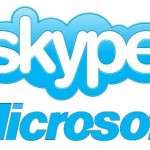
Today, Adobe launched its Flash Player 11 for general consumption, with the main advantage that it bolstered adoption as key partners move toward HTML 5 and browser technologies that don’t require plug-ins. The combination of Flash Player 11 with their own Adobe AIR 3, is being considered as milestone releases which would help in enabling 3D games, along with enhancing the user experience and improving video delivery. Adobe has its eyes set on conquering a big segment as it notifies that its aim is to have 1 billion devices support AIR by the end of 2015.
Anup Murarka, director of product marketing for Adobe Flash, in an interview detailed his two missions. First of the two was to counter the perception that Flash was fading. This was addressed as the software giant, Microsoft had decided to go plug-in free, which would thus mean that its Metro IE 10 browser would be without Flash. Moreover, Apple’s thoughts on the same has been long known in the past. The next point he noted was that Flash and HTML 5 will run side by side for years to come.

Murarka continued saying that Adobe would keep the pace of innovation on Flash. Referring to Microsoft’s statements, he said, “Microsoft was clear that the use case for Flash is on the desktop. Flash will run just fine on the Windows desktop.” For the perceptive claim that Flash usage was dropping, he said that the mobile application and video’s overall market has been booming and Flash has been on its way to ride along.
A point worth noting here is that Flash isn’t a moneymaker for Adobe, as its main source of income comes from selling developer tools. Murarka said, “There’s a chain of value in the tools, servers and analytics to enable mobile apps.” Definitely there are concerns being worked on for the developer interests, but he continued that the idea “that Flash is getting less popular is nothing that any of our metrics are showing.”

Keeping this in mind, Adobe launched its Flash Player 11 and AIR 3 software. The best thing here is that they are mainly focusing on those areas where HTML 5 has not yet got its hold tight. Talking about the ways to create content and applications with Adobe Flash and AIR platforms, across multiple platforms—Android, BlackBerry, Mac, Windows—and screens—smartphones, PCs and TVs, it was an option which could be chosen.
Adobe, on its part, did not refrain from stating that there were a few key holes with its latest Flash Player and AIR releases. Among the key items:
-
Native extensions that allow developers to tap into hardware features such as light sensors, dual screens and Near Field Communications (NFC).
-
Captive runtime so developers can package AIR 3 with applications. That move will simplify installations on Android, Windows, Mac and Apple’s iOS. On many platforms, a user would have to download AIR separately to run an app.
-
Content protection that enables services like TV Everywhere as well as rental and subscription support.
-
Improved video and 2D/3D support.


